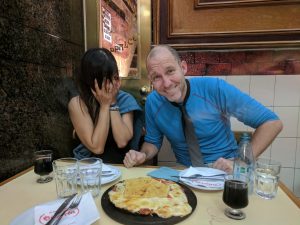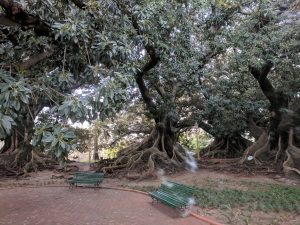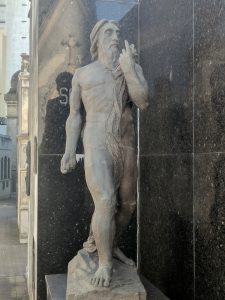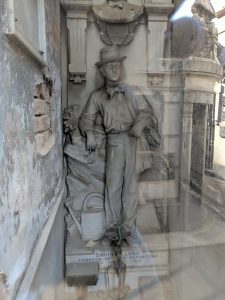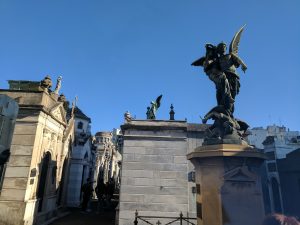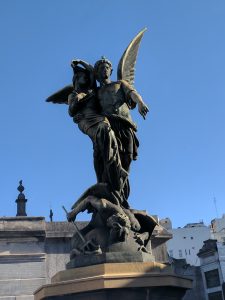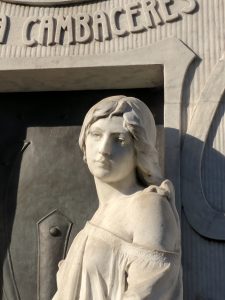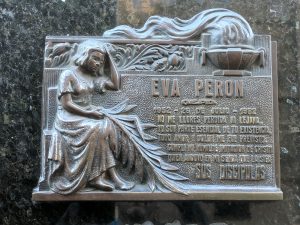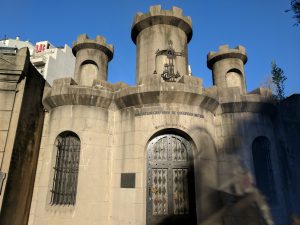Argentina: Buenos Aires and Patagonia
Argentina: Buenos Aires and Patagonia
Like Brazil, Argentina was a place where I wish I had more time.
Top Travel Tips
- There are many museums in Buenos Aires. Highly recommend the Museo de Bellas Artes La Boca
- For souvenirs and gifts, check out the big art market in Buenos Aires, Defensa
- You can travel to Patagonia from Buenos Aires, but prepare for a 20 hour bus ride
While it might seem cliche, ‘whirlwind’ is the only way to describe my time in South America as I struggled to find a balance between seeing as much of the continent as I could and spending enough time in each place to get to know it.
Buenos Aires
I passed the first half of my time in Argentina in her capital, Buenos Aires, which feels very much like a big European city. It has a lot of grand European architecture that is home to a huge number of museums, as well as lots of shops, restaurants and bars that feel like they never close. In addition to the expected Spanish influence, there was a heavy Italian influence in the city. Argentinians even speak Spanish like Italians, with the very expressive Italian accent and hand gestures. Plus there was a lot of good Italian food, which coupled well with a lot of good Argentinian wine. Argentina is the fifth largest wine producer in the world.
While I ate a lot of Italian food in Buenos Aires, their Asado (BBQ) is also not to be missed. Good quality meat grilled to perfection is a big part of gaucho (South American cowboys) culture, which I also saw in Porto Alegre. But there are some significant differences between Argentinian and Brazilian BBQ. Argentinian BBQ tends to be better quality meat, which they grill without adding a lot of salt. Brazilians on the other hand like to baste their meat in large grain salt before they grill it. Brazilians then cut their pretty salty meat into bite size pieces, which everyone will pick at collectively. In Argentina, you get your own steak. If you buy it at a hole-in-the-wall street vendor they will put it in a bun for you, making a delicious sandwich.
Museums & La Boca
Buenos Aires is packed with museums. You would need a week there just to get around all of them, so naturally, I had to be selective.
Of the museums I did visit, my favourite was the Museo de Bellas Artes La Boca, founded by the beloved Argentinian painter Benito Quinquela Martin. It features his own art, including murals he painted specifically for the building, as well as his collection of 20th and 21st century Latin American art.
Visiting the museum is also a good excuse to go to La Boca, one of the quirkiest, though also most touristy, areas of the city. It has cobblestone streets lined with colourfully painted buildings, from which pour out shops, cafes, restaurants and tango bars. It is also where you will find La Bombonera, which is home to the hugely popular Boca Junior soccer team. I was a little disappointed not to be able to catch a game there.
Recoleta Cemetery
It might seem strange to say, but the one of the unmissable sights of Buenos Aires, based on my own opinion and that of almost every traveller I spoke, is Recoleta Cemetery.
The cemetery covers 14 acres and has more than 4,500 tombs, all arranged like a little city, with tombs for important families built on little streets, surely with all the same politics as the living in terms of who lives near who and who has the biggest and best place. The tombs were built between 1880 and 1930 and belong to Argentina’s elite, and the number of military titles listed speaks to the dominant role that the military has played in the history of Argentina.
Surely the most visited grave in the cemetery belongs to Eva Peron (yes of Evita fame, 1919-1952). She embodied the opposite of the aristocratic, military regime immortalised in the cemetery. She fought for the working class, was a proponent of women’s suffrage, founded the women’s political party, and ran for Vice President, only to die of cancer at the young age of 33. She was only buried there more than 20 years after her death. In order to prevent any uprisings, the government that came to power following her death tried to bury it in an unmarked grave elsewhere in Buenos Aires. But this failed, and the body (and a number of decoys) was sent to Italy, and then Spain, before being returned to Argentina. She was only interred in Recoleta in 1976.
Nightlife
The centre of Buenos Aires, including the hippy San Telmo district, are safe to explore alone day and night. You will probably notice a pretty substantial police presence in the streets. There are lots of bars and restaurants, particularly on and around Defensa in San Telmo. On Sundays the whole of Defensa turns into a big art market that is interesting just to visit, and is also the best place to pick up any souvenirs and presents.
If you want to get a bit more off the beaten track, like I did, try and meet up with a local to see some of the things that aren’t in the guidebooks. I met up Fleur, who I discovered via an experience website. She introduced me to Argentina’s famous Tango music at a great local place called Cafe Vinilo. I then got to watch some impressive Tango dancing at a Milonga, which is the name in Buenos Aires for a Tango dancing club.
Patagonia
I only managed to spend a few days in Buenos Aires, as I wanted to get down to Patagonia. This is the region at the southernmost tip of the content, which is shared by both Argentina and Chile, with the Andes Mountains as the dividing line. It is great for skiing in the winter months, which is when I visited. I elected to get the bus there, which was air conditioned and pretty cushy, but took about 20 hours!
I did a week homestay there with a local family. I studied Spanish at the BSL School in Bariloche in the mornings, and worked on my skiing in the afternoons, arriving just in time for the last week of skiing lessons that were on offer that winter. The town itself was fun to explore in the evening, and I made some friends via a local CouchSurfing meet up.
Things for Next Time
I enjoyed hearing the experiences of the many other travellers that I met in Argentina, but it also made me realize all the great things in this country that are still to do. Top on my list for when I come back are the Tibre Delta, a historic colonial region not far from Buenos Aires and, the train through the clouds that runs through Salta in northern Argentina.
https://photos.google.com/album/AF1QipOWujLyzueloIgZE0rdvCpx5UKq0zehph7NySgg





